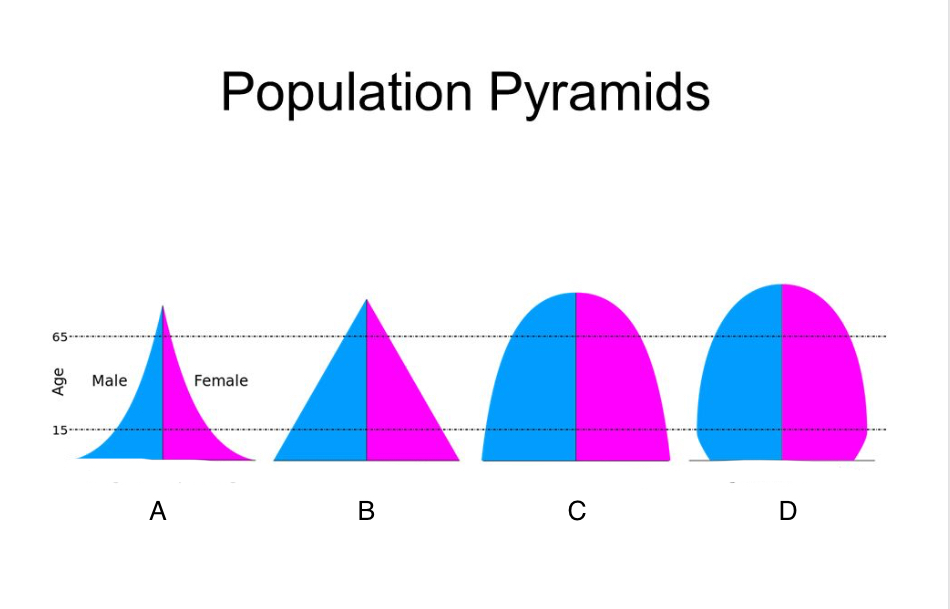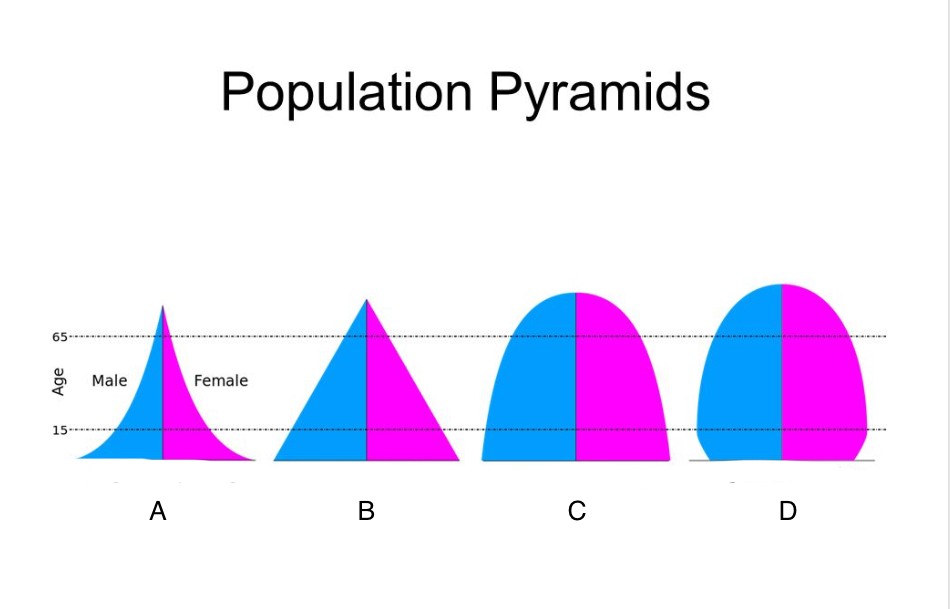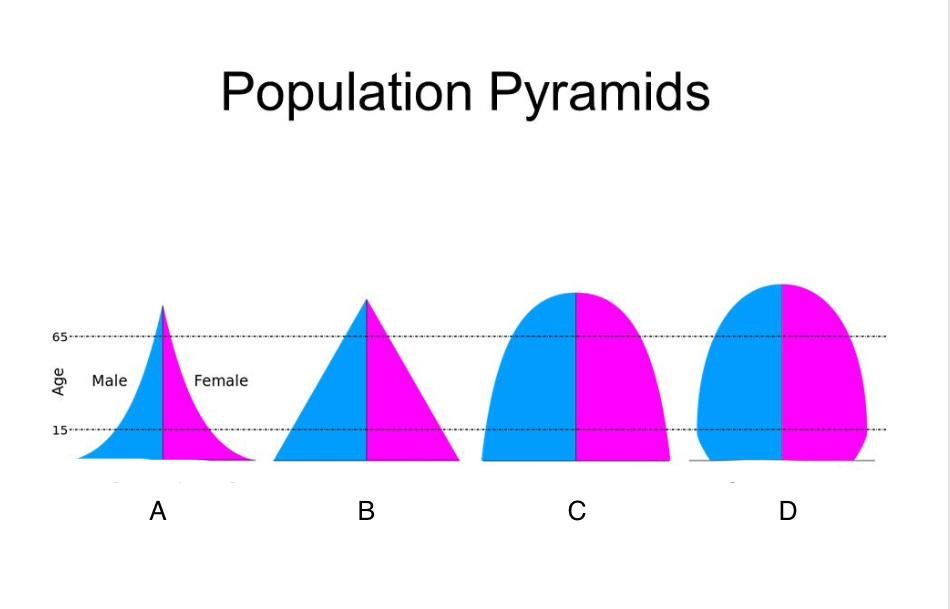AP HUG unit 2
1/119
Earn XP
Description and Tags
2.7, 2.6, 2.8, 2.10, ~2.11, 2.5, 2.3, NOT 2.12, 2.13, 2.2, 2.4
Name | Mastery | Learn | Test | Matching | Spaced |
|---|
No study sessions yet.
120 Terms
\- ex: 100 people per square kilometer
\- more arable = more people
Arable land
Agriculturally productive/fertile
Agricultural Density
Number of farmers per unit arable land
- more developed = lower agricultural density/less farmers
\- rural and urban areas have different political needs and often disagree
\- urban areas have more jobs
\- social needs include healthcare, entertainment, education, etc.
\- urban areas can provide these better
Consequences of Overpopulation
- Job shortages
- Housing shortages
- more schools needed
- more sick people, more babies, etc.
Crude Birth Rate
Number of live births per 1000 of population in a year
Ex: 10 infant deaths for every 1000 births
Ex: 10 child deaths for every 1000 births
\- varies by region
\- affects population and population structure
\- affects population and population structure
Social Effect on Fertility
- Women’s Role in Society
- Religious views on BC and abortion
- Elders wanting kids to take care of them
\- Kids are seen and work assets in Agrarian Society
\- Kids are seen as economic liabilities in developed countries
\- parents in LDC have 7 kids with the expectation of 2 dying bc of poor healthcare, so they have more kids to counter act that. With better healthcare, parents don’t have to worry about their kids dying and have.
His solution: don’t assist poor people as they’re the cause of overpopulation.
\- didn’t consider how migration would redistribute the population
\- survival of the fittest, social Darwinism, lifeboat ethics, cutting aid and restricting resource from LDCs
\- increased population will motivate scientific development
Pro-Natal Policies
Encourage pregnancy to increase population growth.
- baby schemes
- parental leave
- childcare costs offsets
\- Increase women’s access to healthcare
\- financial incentives for giving birth
\- parental leave policies
\- Implement laws to regulate the number of kids
\- pro-natal policy
\- pro-natal policy
\- pro-natal policy
\- cost of caring for the elderly (retirement homes, etc)
\- Need more Education infrastructure
\- Stress on prenatal/child Health Care
\- Housing shortage
\- More dependents=more support needed
\- anti-natal policy
Cultural Push Factors
Changes or lack thereof of societal norms
Demographic Push Factors
When the push factor only affects a certain demographic.
\- Lower Cost of Living
\- Higher Salary
ex: refugees fleeing war are pulled to peaceful places
ex: Mexican migrants moving to the USA would go to San Antonio rather than Iowa
Step Migration
long-distance migration i done in steps
ex: job opportunities, assistance programs, positive perception of immigrants, etc.
ex: challenging physical geography, restrictive immigration policies, cultural/language barrier, negative perception of immigrants, etc.
\- every migration wave triggers counter migration
\- Type of Cyclical Movement
ex: commuting
\- Type of Cyclical Movement
ex: pastoral nomads move their animals to water sources and pastures an a regular basis
\- short-term migration
\- important part of economy for LDCs
Rural to Urban Migration
Migration to rural/suburban areas to urban areas
Forced Migration
When people are forced to migrate
\- crosses borders


